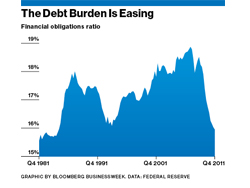
Given the economic volatility in the U.S. and Europe, communications departments and CEOs are accustomed to delivering bad economic news.
In America, for example, the monthly jobs report for May suggested a slowdown in the nation’s hiring, although the Obama administration tried to highlight the few bright spots in the report.
Meanwhile, in the U.K., Marks & Spencer CEO Marc Bolland announced last week that the retail giant saw a drop in full-year profit. The CEO, whose company is considered a bellwether in Great Britain, offered some good news: sales, including food, were up, and there was some cheering news in menswear. M&S was, he said, “performing well in a challenging environment.”
As Bolland demonstrated, it is crucial to keep a check on your demeanor when delivering the news. If you appear under pressure and under threat, you will leave an unhealthy impression of your business, no matter how much you focus on the positives.
So, what should companies do to release bad news in a way that can soften the negative impact? Here are seven top recommendations to remember:
1. The news is hardly ever totally negative. Somewhere there will be a hint of the silver lining and that must be emphasized. It may be that some sections of the market are showing a plus figure, however small. There may be other aspects that come under the heading of positive news. For example, the loyalty of customers (even if they are spending less) and the hard work of the staff.
2. The customer base is one factor that is too often ignored. Forget the analysts, investors, and commentators for a moment and concentrate on the customers. If your business is doing badly, it is almost certainly because the customers are suffering as well. So how about a helping hand for them? Why not emphasize the reductions, the special deals, the two-for-one offer? Make it clear that the customers, even in this difficult time, are the first priority in your business.
3. The tone in which the CEO portrays the gloomy picture is also important. The overall picture may be grim, but that doesn"t mean the CEO has to deliver the figures with the expression of a man who"s lost his winning lottery ticket. Understanding and sympathy will go down well with cash-strapped customers.
4. There is usually nowhere to hide. Refusing to give interviews and simply offering the media written statements will do more harm than good. Putting your head above the parapet indicates clearly that you are willing to confront the issues and discuss them in public. Nobody likes hearing bad news, but if it is presented with honesty it becomes more acceptable.
5. It is also vital to put any bad news in context. For example, giving the impression that you are the only retailer suffering is to shoot yourself in the foot. Your business is part of the wider picture and the wider problem, and you should remind your audience of that.
6. A positive approach to negative news should also include a clear indication that action is being taken. Simply doing nothing and bewailing your ill fortune while others are also suffering will bring you little sympathy. But if you can talk about actions and initiatives that are being taken to lessen the impact, you will be sending a clear signal that you are not simply a helpless victim of economic circumstances.
7. Customers need to feel secure in those with whom they do business. They want to know that, however tough the times, their favorite retailer is still holding its corporate head high, and using all its skill to lessen the impact of economic crisis. It is up to the CEO to give them the assurance they need.
By Andrew Harvey

3.jpg)




















